
|
Astronomy Picture Of the Day (APOD)
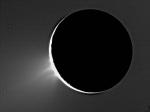 Ice Fountains Discovered on Saturns Enceladus
Ice Fountains Discovered on Saturns Enceladus
4.12.2005
Fountains of ice shoot out from Saturn's moon Enceladus. Clear discovery images of the fountains were made using observations from the robot Cassini spacecraft currently orbiting Saturn. During a recent pass, Cassini was programmed to look back toward the Sun where Enceladus would appear as a thin crescent.
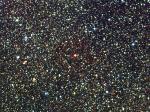 Proxima Centauri: The Closest Star
Proxima Centauri: The Closest Star
3.12.2005
What is the closest star to our Sun? It is Proxima Centauri, the nearest member of the Alpha Centauri triple star system. Light takes only 4.22 years to reach us from Proxima Centauri. This...
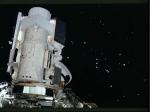 Astro 1 In Orbit
Astro 1 In Orbit
2.12.2005
Fifteen years ago, in December of 1990, the Space Shuttle Orbiter Columbia carried an array of astronomical telescopes high above the Earth's obscuring atmosphere to explore the Universe at ultraviolet and x-ray wavelengths.
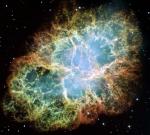 Crab Nebula Mosaic from HST
Crab Nebula Mosaic from HST
1.12.2005
The Crab Nebula is cataloged as M1, the first object on Charles Messier's famous list of things which are not comets. In fact, the cosmic Crab is now known to be a supernova remnant, an expanding cloud of debris from the death explosion of a massive star.
 SOHO s Uninterrupted View of the Sun
SOHO s Uninterrupted View of the Sun
30.11.2005
Launched ten years ago this week, SOHO (the SOlar and Heliospheric Observatory) still enjoys an uninterrupted view of the Sun. Twelve sungazing instruments on board the spacecraft have explored the Sun's internal structure...
 Reflections on the Horsehead Nebula
Reflections on the Horsehead Nebula
29.11.2005
Sculpted by stellar winds and radiation, a magnificent interstellar dust cloud by chance has assumed this recognizable shape. Fittingly named the Horsehead Nebula, it is some 1,500 light-years distant, embedded in the vast Orion cloud complex.
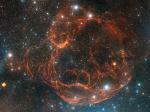 Simeis 147: Supernova Remnant from Palomar
Simeis 147: Supernova Remnant from Palomar
28.11.2005
It's easy to get lost following the intricate filaments in this detailed image of faint supernova remnant Simeis 147. Seen towards the constellation Taurus it covers nearly 3 degrees (6 full moons) on the sky corresponding to a width of 150 light-years at the stellar debris cloud's estimated distance of 3,000 light-years.
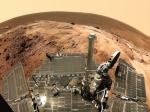 Vista Inside Gusev Crater on Mars
Vista Inside Gusev Crater on Mars
27.11.2005
What is the geologic history of Mars? To help find out, the robot Spirit rover explored the terrain on the way up to the top of Husband Hill and took pictures along the way.
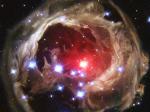 Light Echoes from V838 Mon
Light Echoes from V838 Mon
26.11.2005
What caused this outburst of V838 Mon? For reasons unknown, star V838 Mon's outer surface suddenly greatly expanded with the result that it became the brightest star in the entire Milky Way Galaxy in January 2002. Then, just as suddenly, it faded.
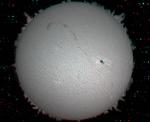 A Stereo Sun
A Stereo Sun
25.11.2005
A stereo view of the closest star, this creatively composited image was constructed from an extensive archive of pictures taken between March 2004 and April 2005. When viewed with red/blue glasses, the Sun's disk and surface features, including sunspots, filaments, and prominences, stand out in an exaggerated stereo perspective.
|
January February March April May June July August September October November December |
|||||||||||||||||||||||||||||||||||||||||||||||||